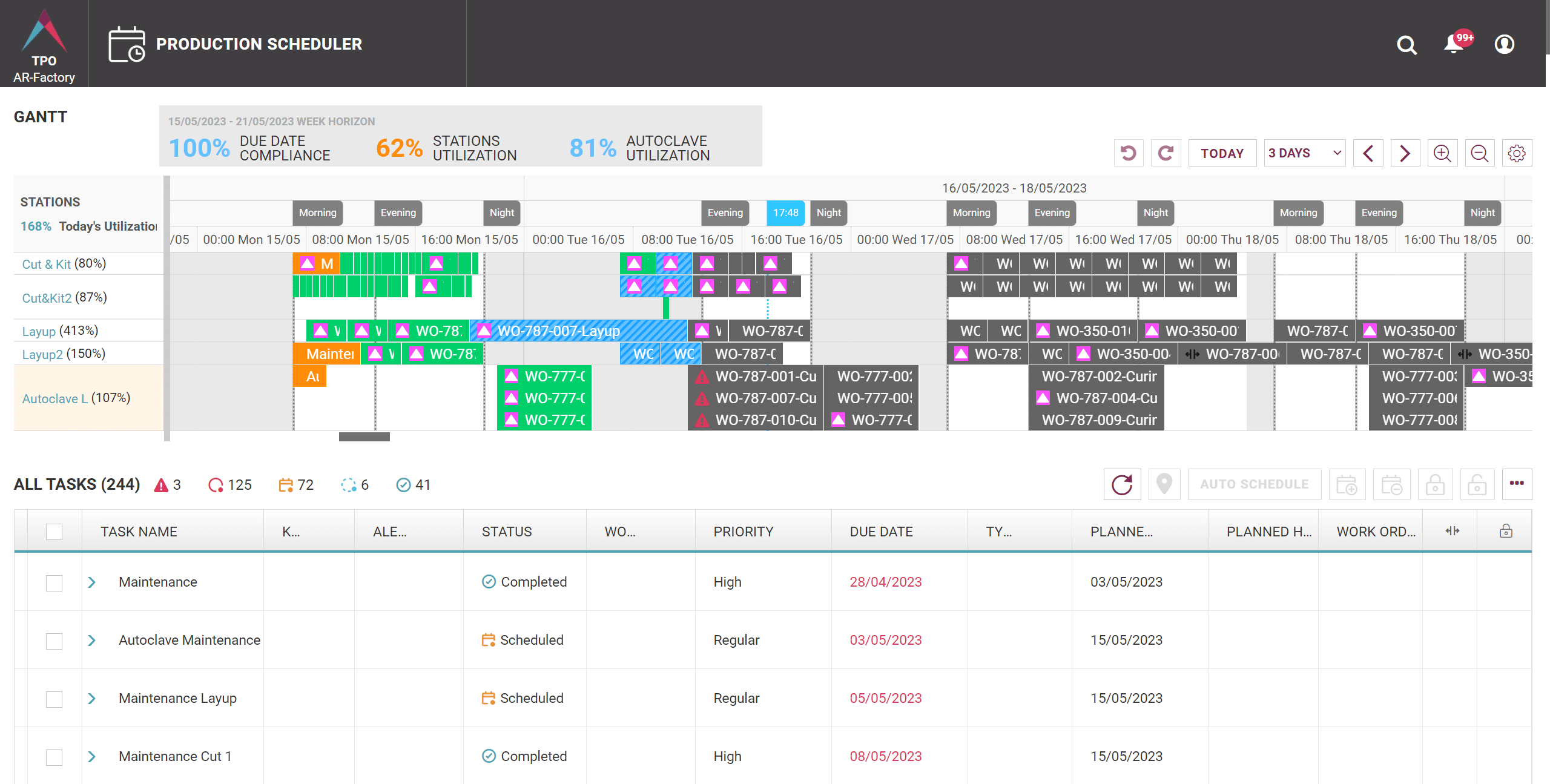Stockouts are frustrating. It leaves your customers disgruntled and leads your business to lose out on potential revenue. Overstocking leads to wastage instead. Add the complexities of brittle supply chains and the ever-changing business landscape, and you’ll realize how vital production planning and scheduling can be.
While production planning is nothing new, digital is undoubtedly changing its course and demands you to be more efficient with your processes. Read on to discover why and how digital planning tools and manufacturing production scheduling software can help you scale your manufacturing business amidst competitive rivalries.
What is Production Planning?
Production planning is the process of allocating resources, raw materials, and activities to manufacture products for customers in a specified time frame. Demand forecasting, inventory management, and job scheduling are all part of the planning process.
Production planning and scheduling allow you to design your manufacturing process efficiently by ensuring your production needs align with optimal resource usage. It also allows you to achieve production scheduling optimization so that you can always fulfill your orders without any delays or interruptions.
What is a Manufacturing Production Scheduling Software?
Production planning is an automated software, allowing planners to make strategic decisions regarding their production by creating detailed schedules of activities on the factory floor. Accounting for raw materials, resources, and activities helps improve on-time deliveries and increase resource utilization.
Why is Manufacturing Scheduling Software Important?
Here are the top reasons why you should invest in production planning software:
Improved Efficiency
Optimal schedules and real-time data monitoring can help you avoid potential delays and potential bottlenecks. Monitor your shop floor operations and be proactive about any issues to help increase efficiency and improve bottom lines. The cherry on top, such software can help adjust changes on the factory floor in real time.
Enriched communication
Is your top floor and shop floor far away from each other? With manufacturing schedule software, distance is not a problem. These software solutions ensure all departmental staff, from manufacturing to sales and even HR, stay on the same page and exchange information instantaneously.
Improved customer relationship
Always having your products on the shelves translates into happy customers. Moreover, standard procedures mean you get to improve your product quality and maintain it. As a result, your customer relationships tend to improve.
Material Requirement Planning
Production planning software helps streamline business processes by striking the perfect balance between stockouts and overstocks. Through continuous updates of inventory in the software solution, automatic orders can be placed. Even better, these solutions can also update relevant personnel responsible for replenishments.
How to Create an Efficient Manufacturing Production Schedule?
An efficient manufacturing schedule ensures mapping all production steps, from demand forecasting to determining the resources needed. Here is how to create an efficient manufacturing production schedule:
Demand Forecast
Efficient manufacturing production scheduling starts with a well-grounded demand forecast. You must estimate potential sales with reliability to optimize production. Most businesses don’t have solid numbers on future sales, so what to do?
You can rely on market trends, historical information, and already-established orders to have a near-precision forecast. Analysis of the market and information gathering and scrutiny can help support your demand forecast.
Maintain Inventory Control
Your production pipeline needs a consistent source of inventory for production without interruptions. Have an inventory management plan in place so you don’t experience any shortage or waste during production.
Efficient inventory control involves reordering at pre-set reordering quantities, considering their storage conditions and lead times. Shop floor scheduling software can help you take care of all this by implementing various inventory management functions and features.
Plan Resources
The next major part of your production plan is resource planning. Taking into account all the minor resource planning details will save you from unaccounted-for delays. Your employee may get sick, or your machine may break down. Planning for these will ensure optimal utilization of capacity.
Manufacturing and machine scheduling software cover all parts of the production process, and resource planning is no exception. Any change on the shop floor is adjusted and accounted for through them.
Monitor Production and Standardize
If your manufacturing facility just began operations, monitor the production process and the average time it took to complete them. This process will help you process average production times for later productions. Compare your results to projections made and see where you stand.
With the right manufacturing production scheduling software, there is no need to do the calculations because they will do it for you. No human errors are an added plus.
Adapt and make adjustments
Anything can happen on the factory floor despite long hours of planning. Accounting for the unexpected is just as important in planning as anything else. The key lies in adapting and being flexible, so your deliveries stay on track.
Lastly, reflect on the previous processes to assess what you could do better. Making adjustments is vital to continuous efficiency in production scheduling. Good planning software can help you compare planned vs. actual production progress under a single software.
Why is a Good Manufacturing Production Schedule so Important?
With so much emphasis on developing a good production schedule, the question is, why is it so essential to make one?
An excellent manufacturing production schedule ensures you stay in control of your manufacturing processes, allocating resources in stipulated periods in the most efficient manner. You also get to keep track of production schedules so that your products can reach their destinations on time.
Optimized manufacturing production schedules also ensure minimal production inefficiencies, resources are optimal, and unanticipated delays are adjusted. With such plans, you can ensure your manufacturing factory reaches optimal production capacities.
Key Takeaway
A stable and optimized production schedule can be done more effectively with the best production planning tools. AI software solutions can help advanced manufacturers like you optimize your production levels and significantly reduce costs.
If you wish to be a part of the digital manufacturing revolution, contact our digital manufacturing experts at Plataine now.










